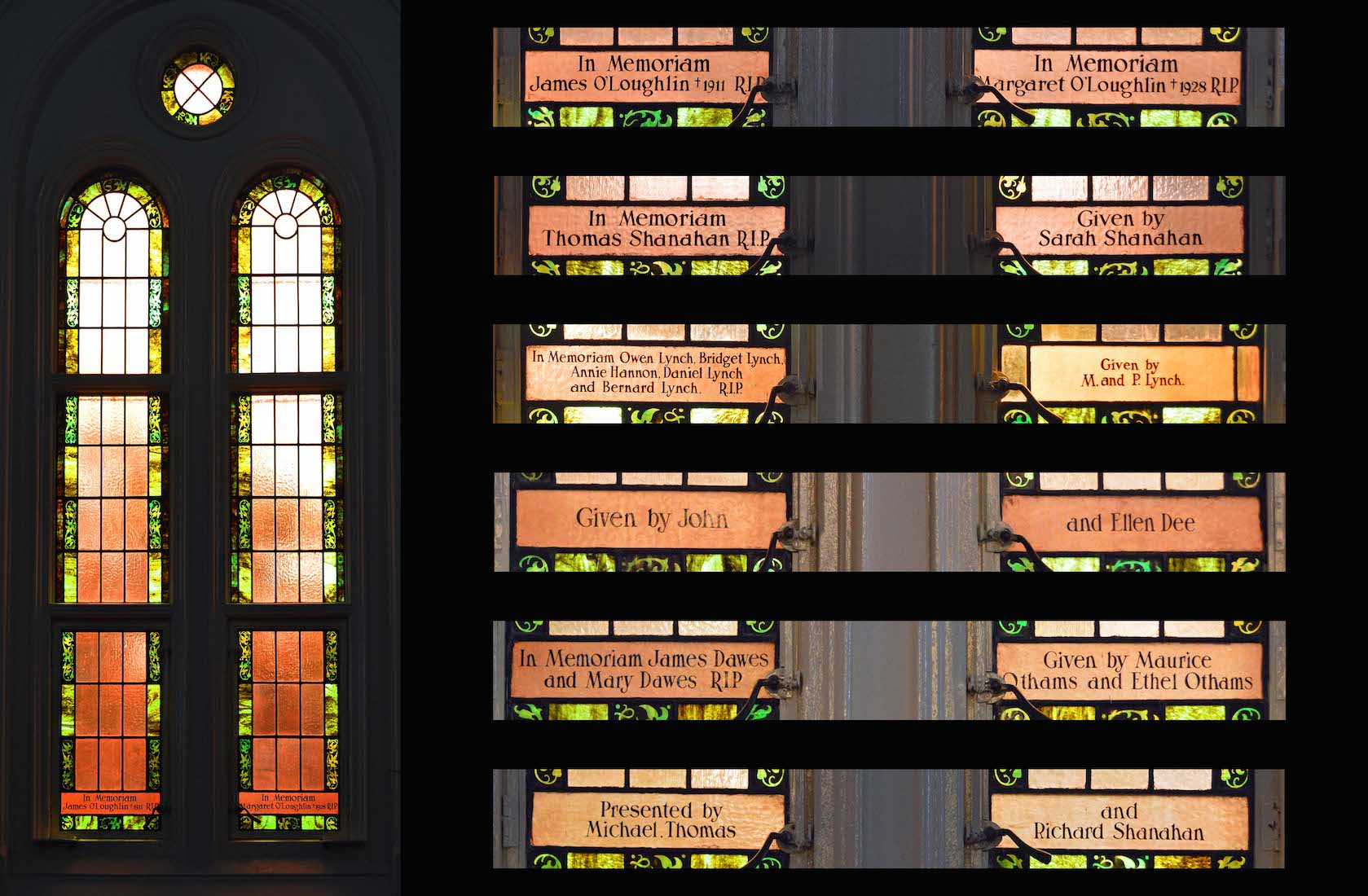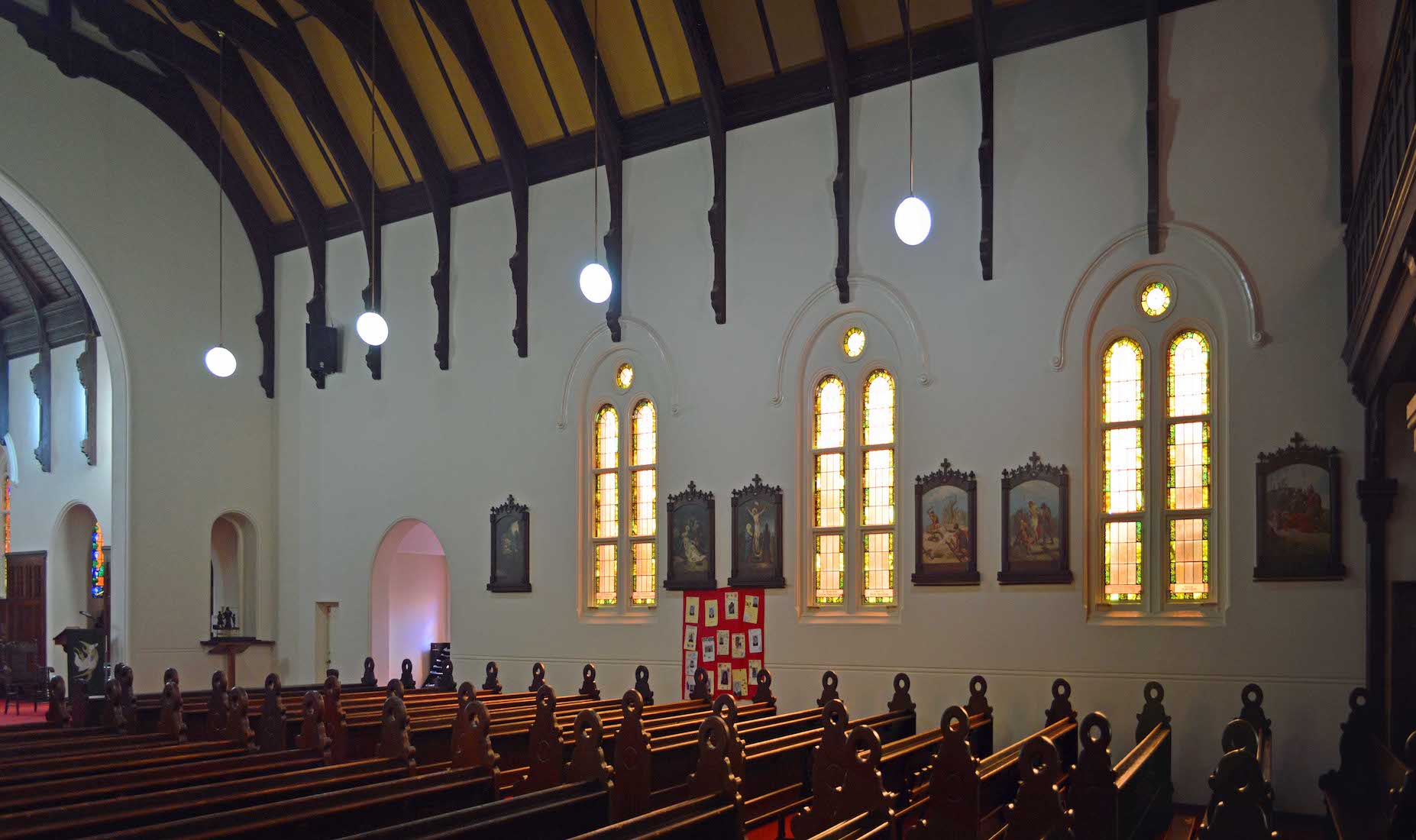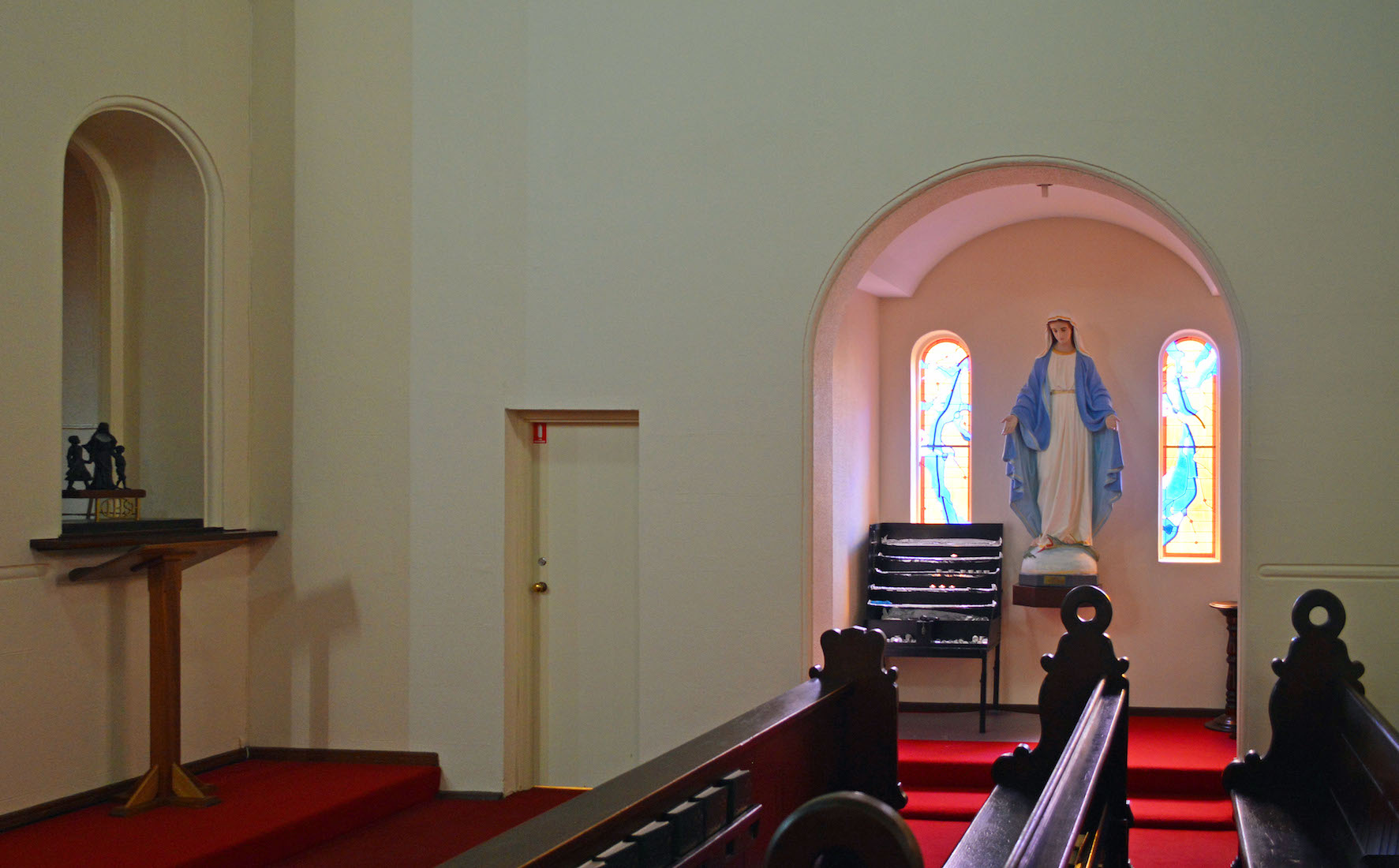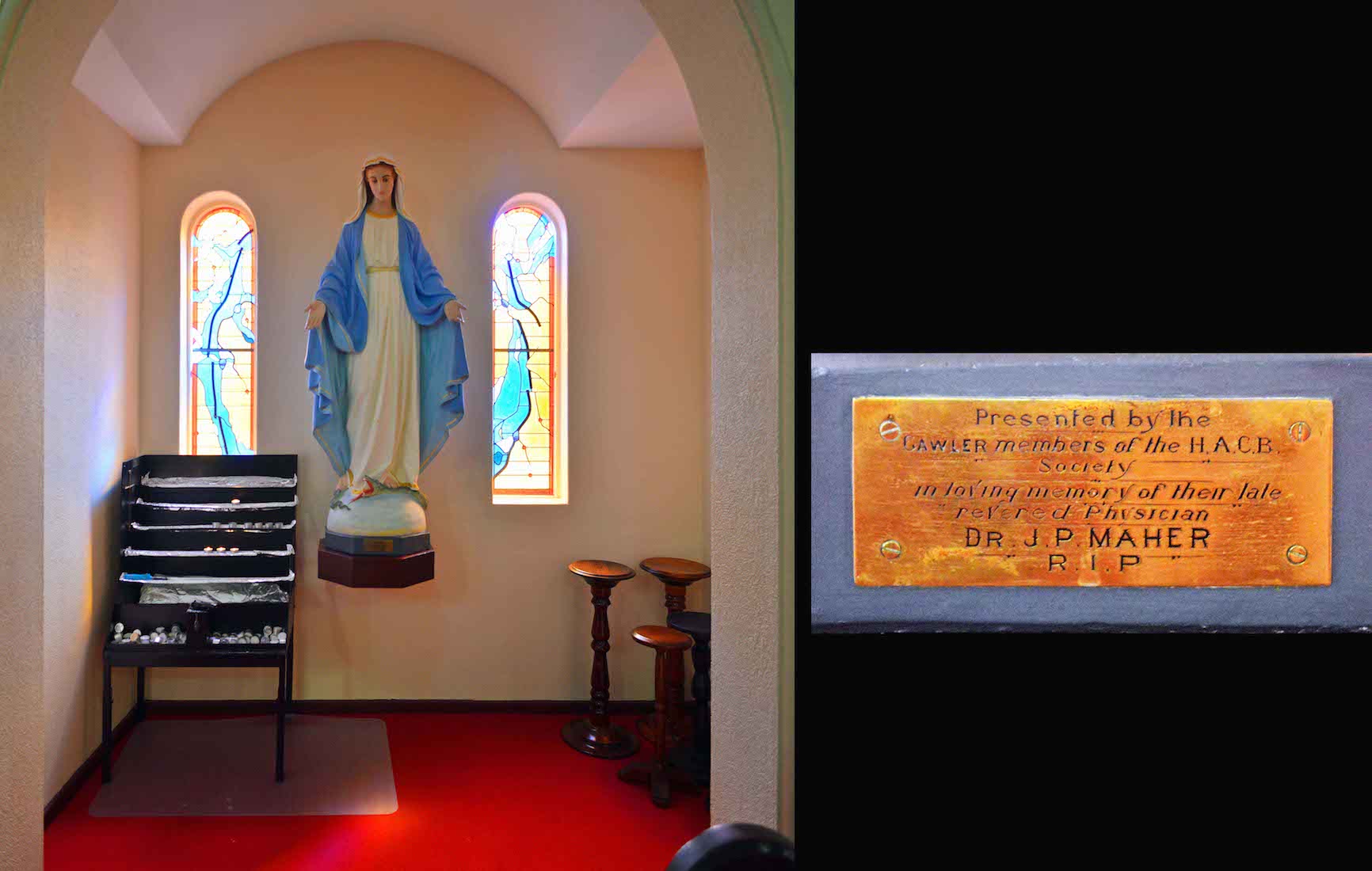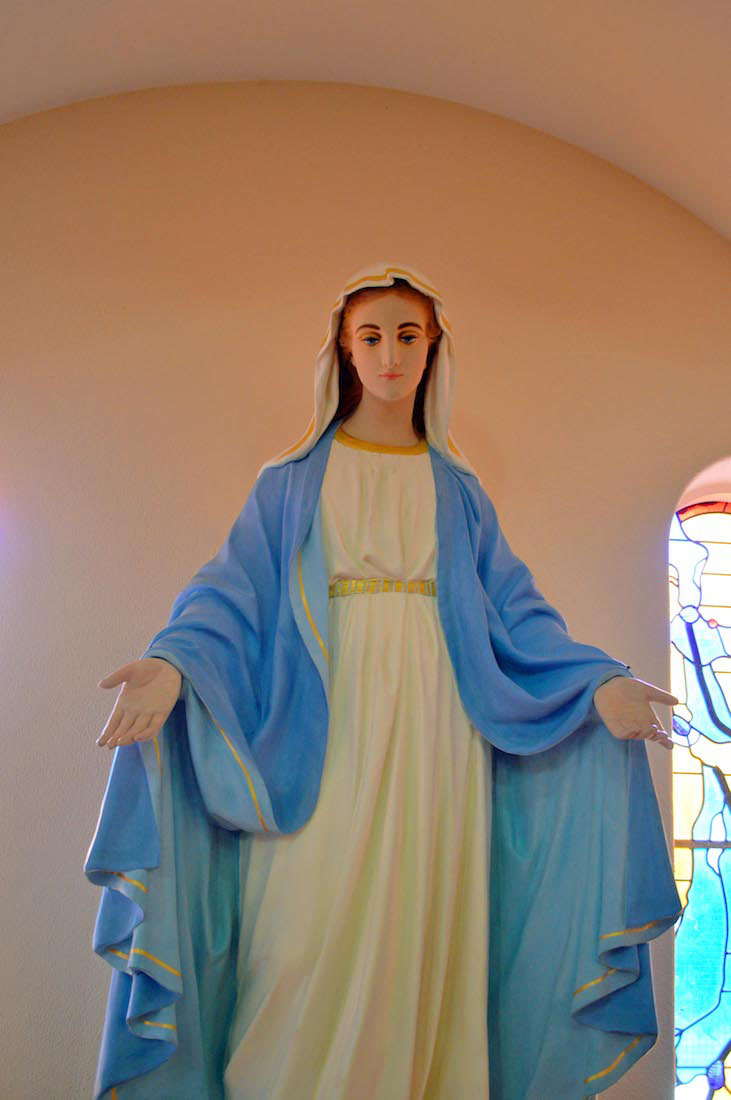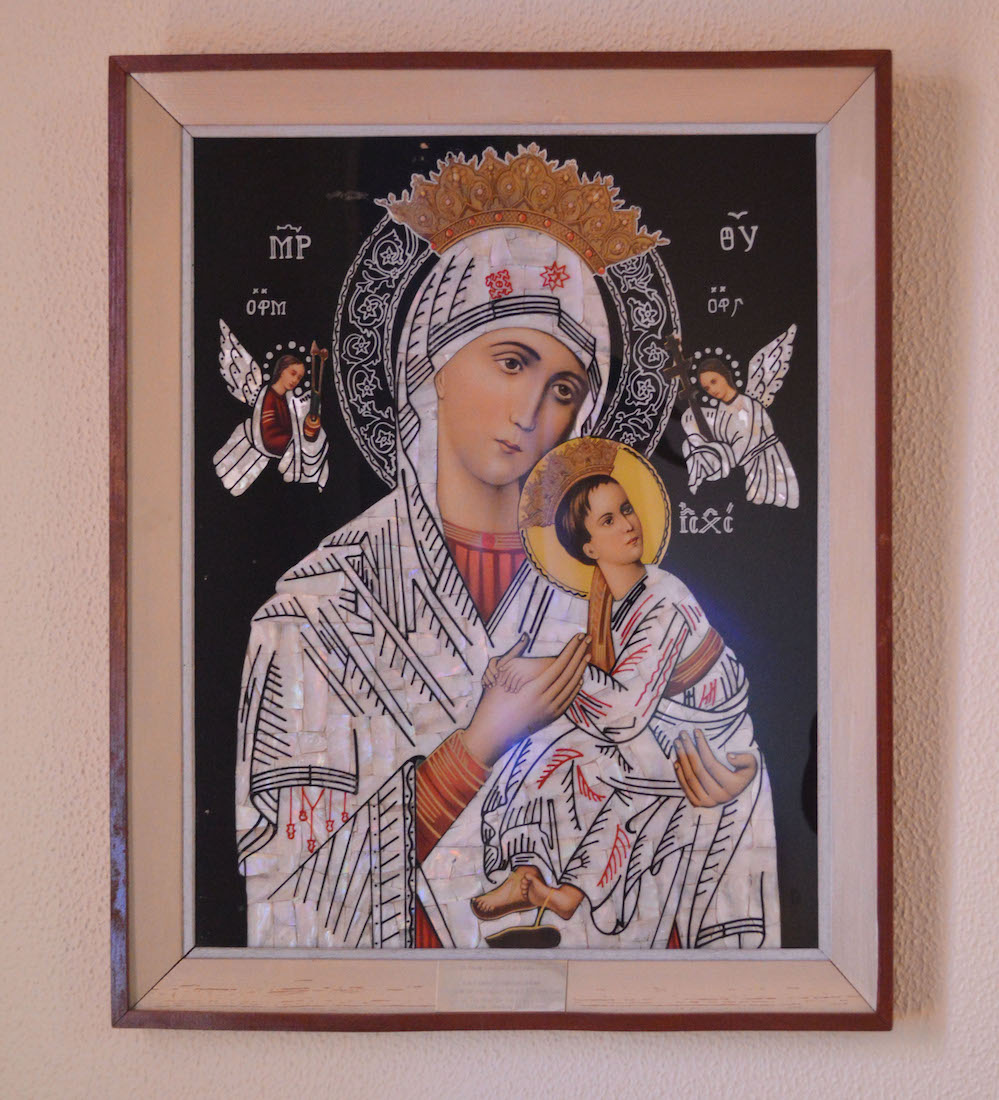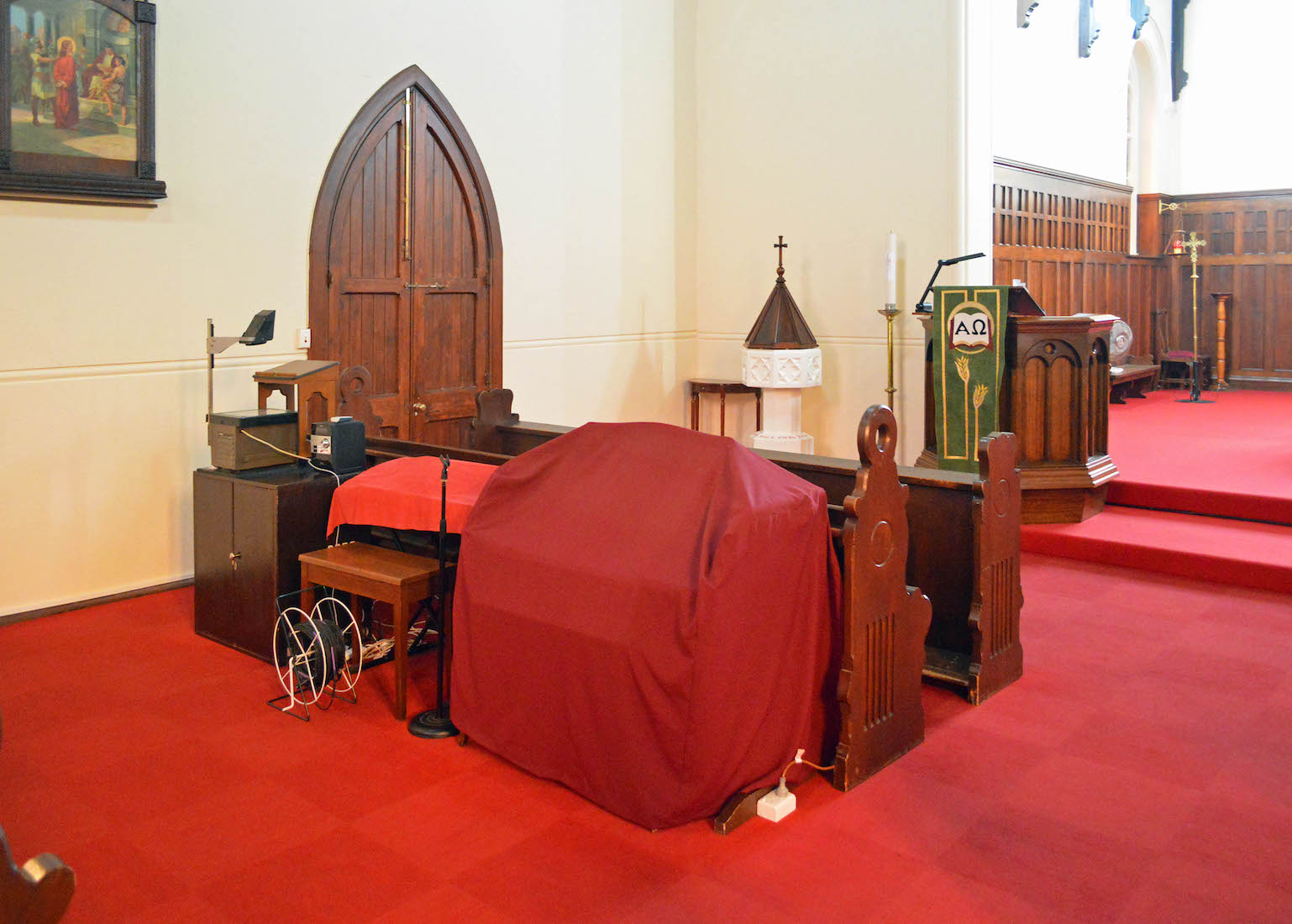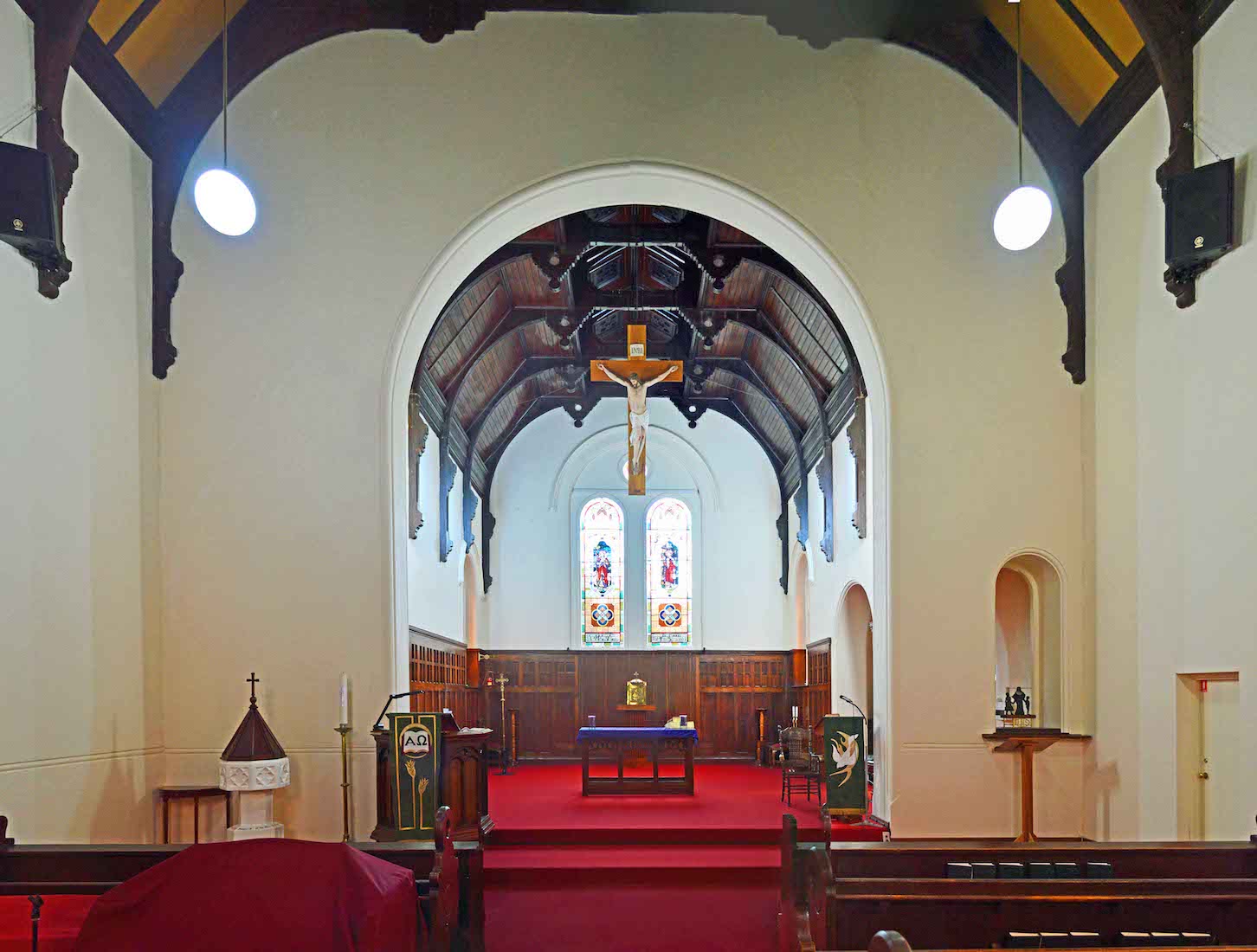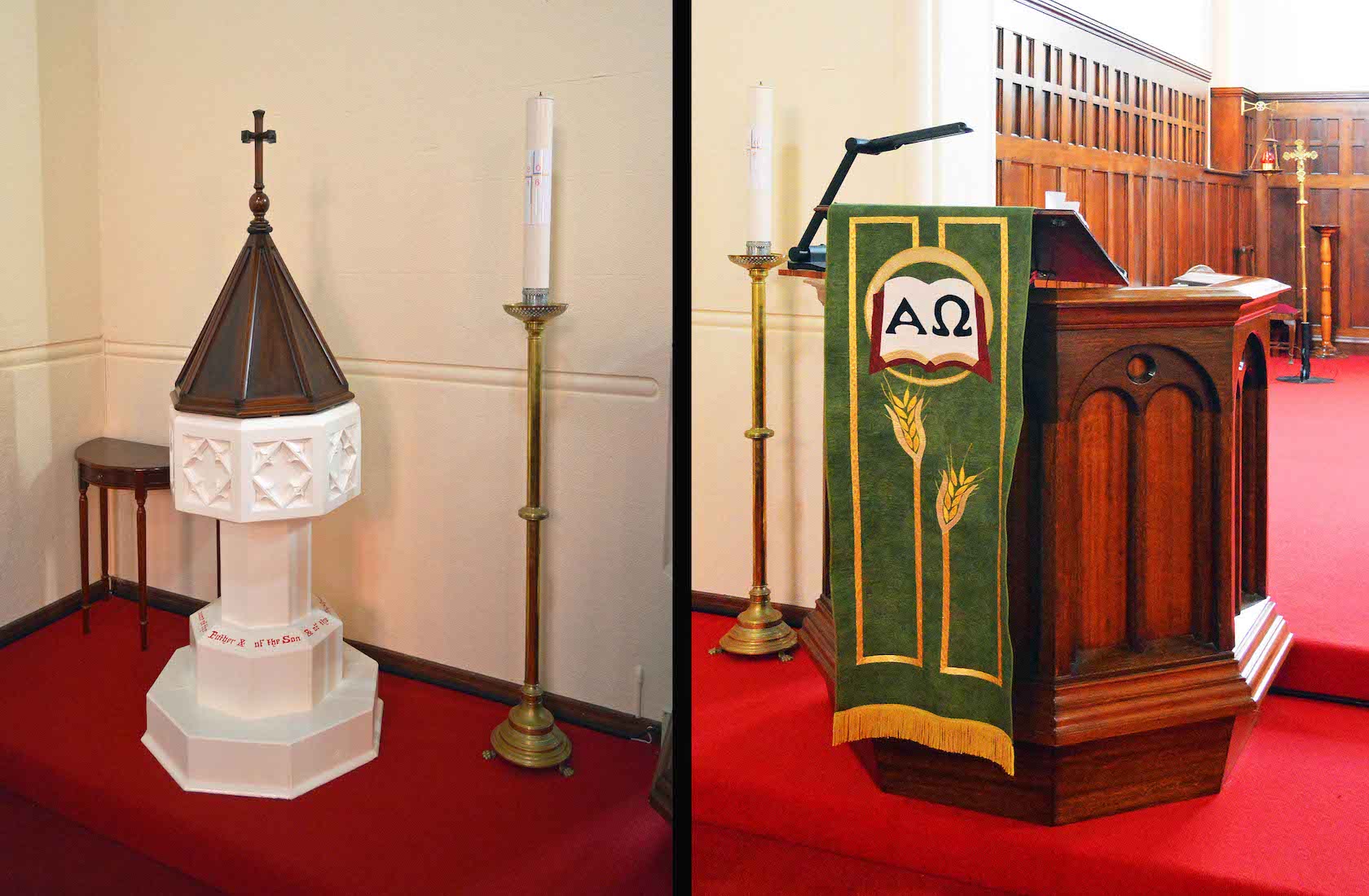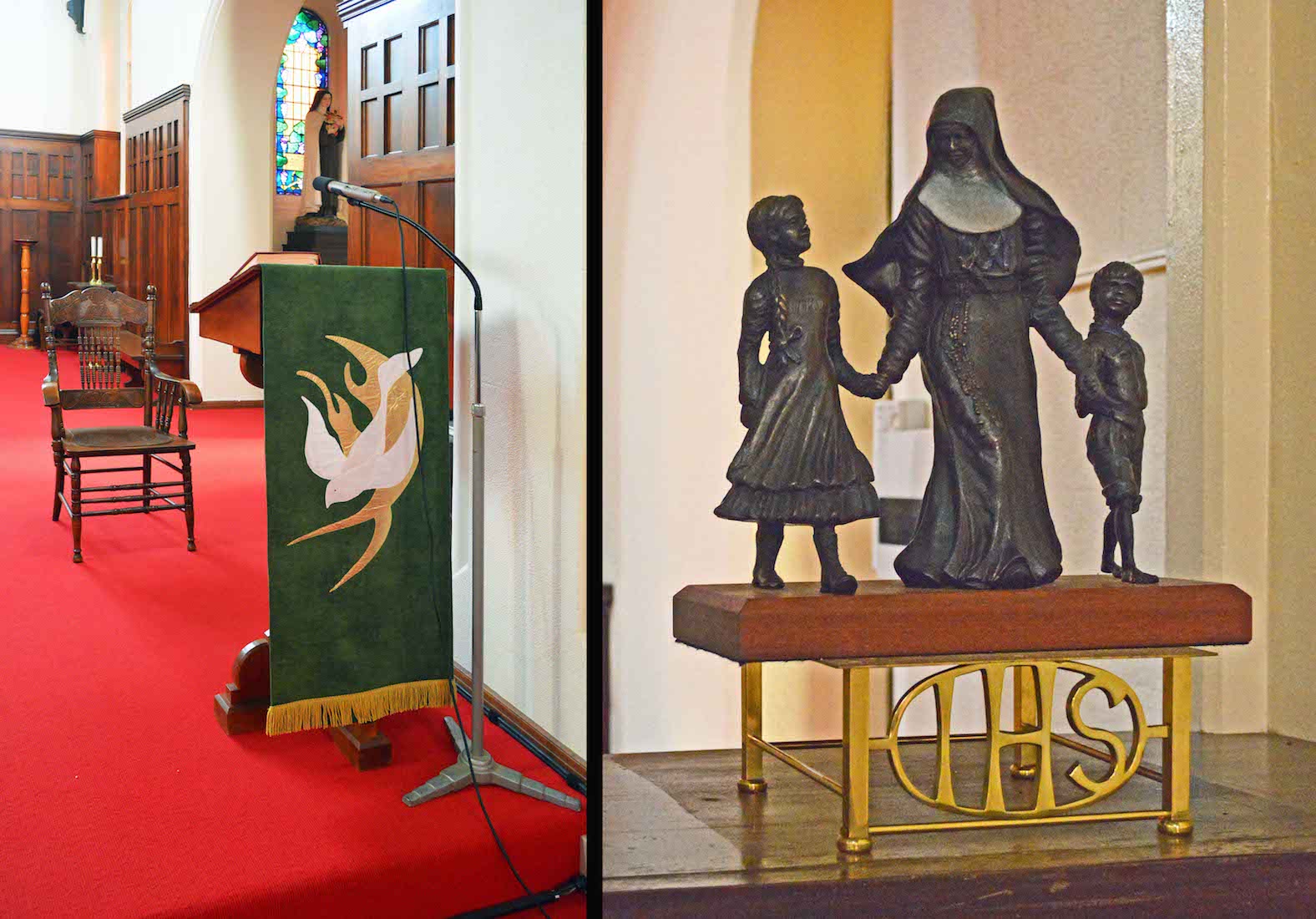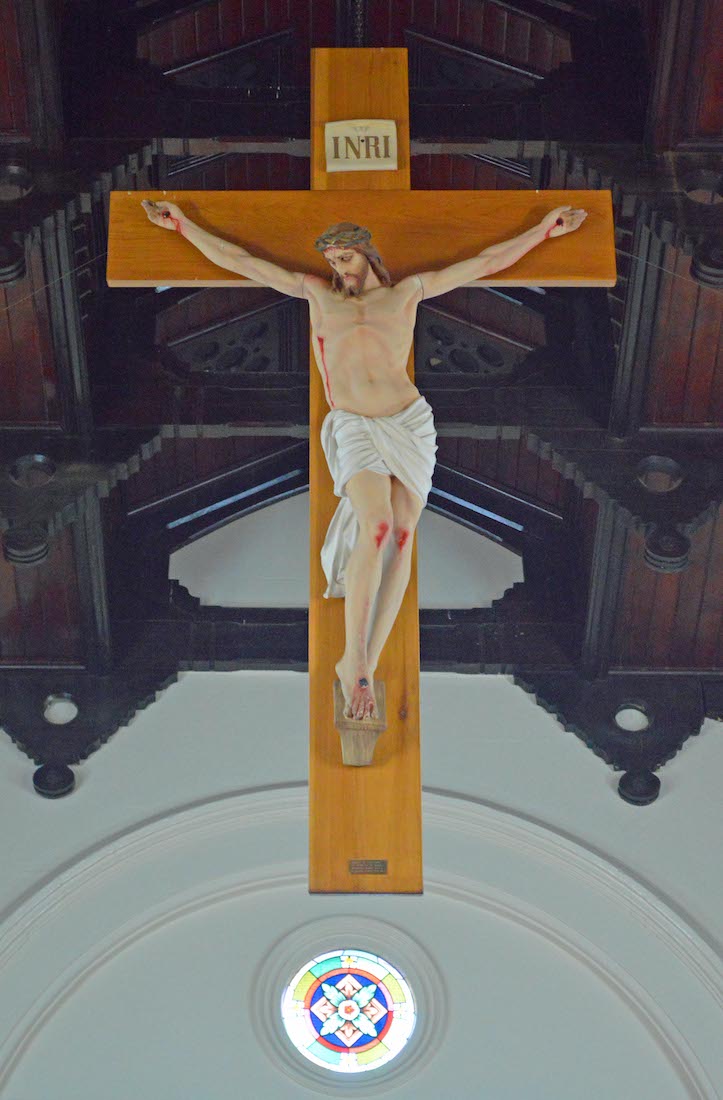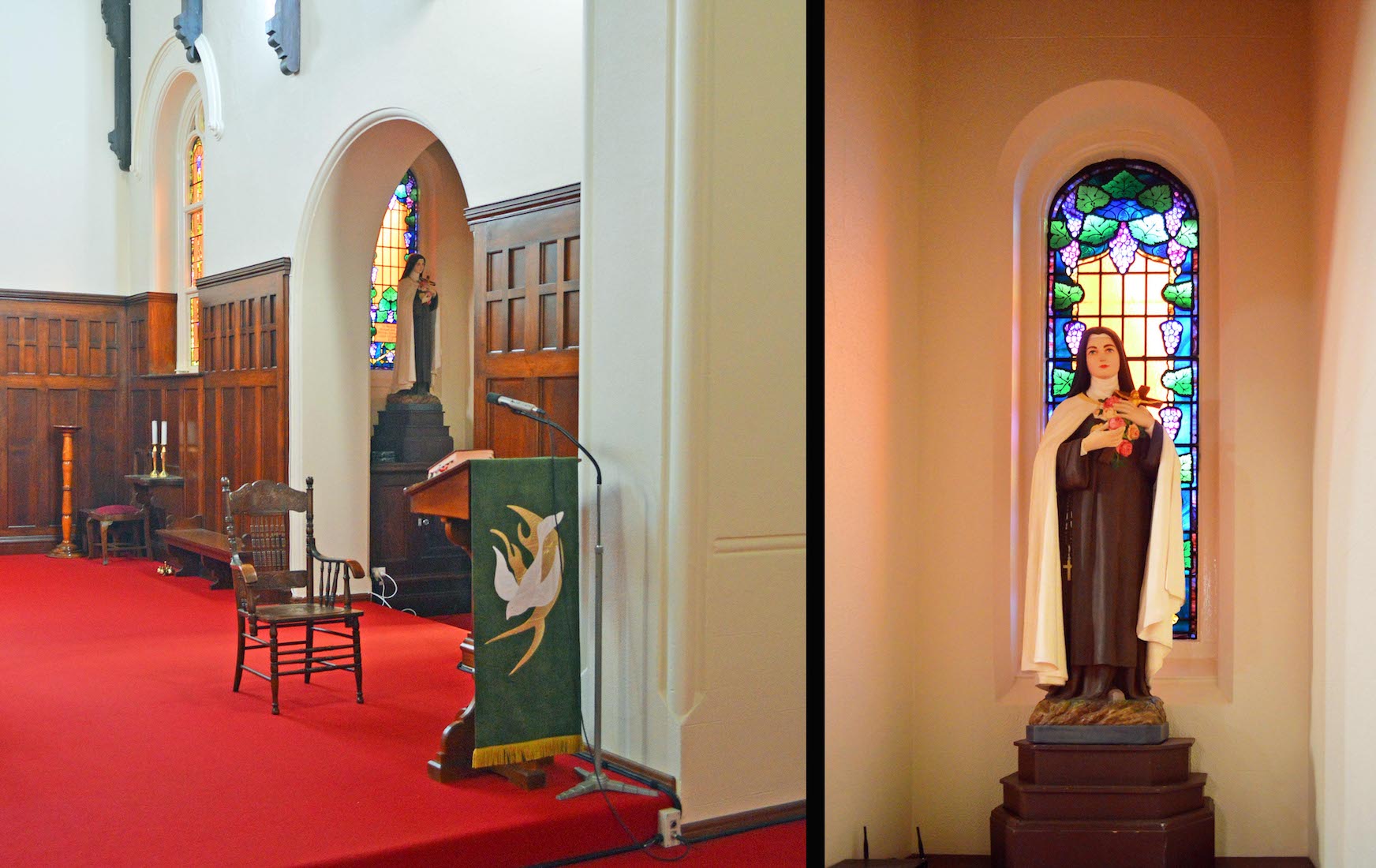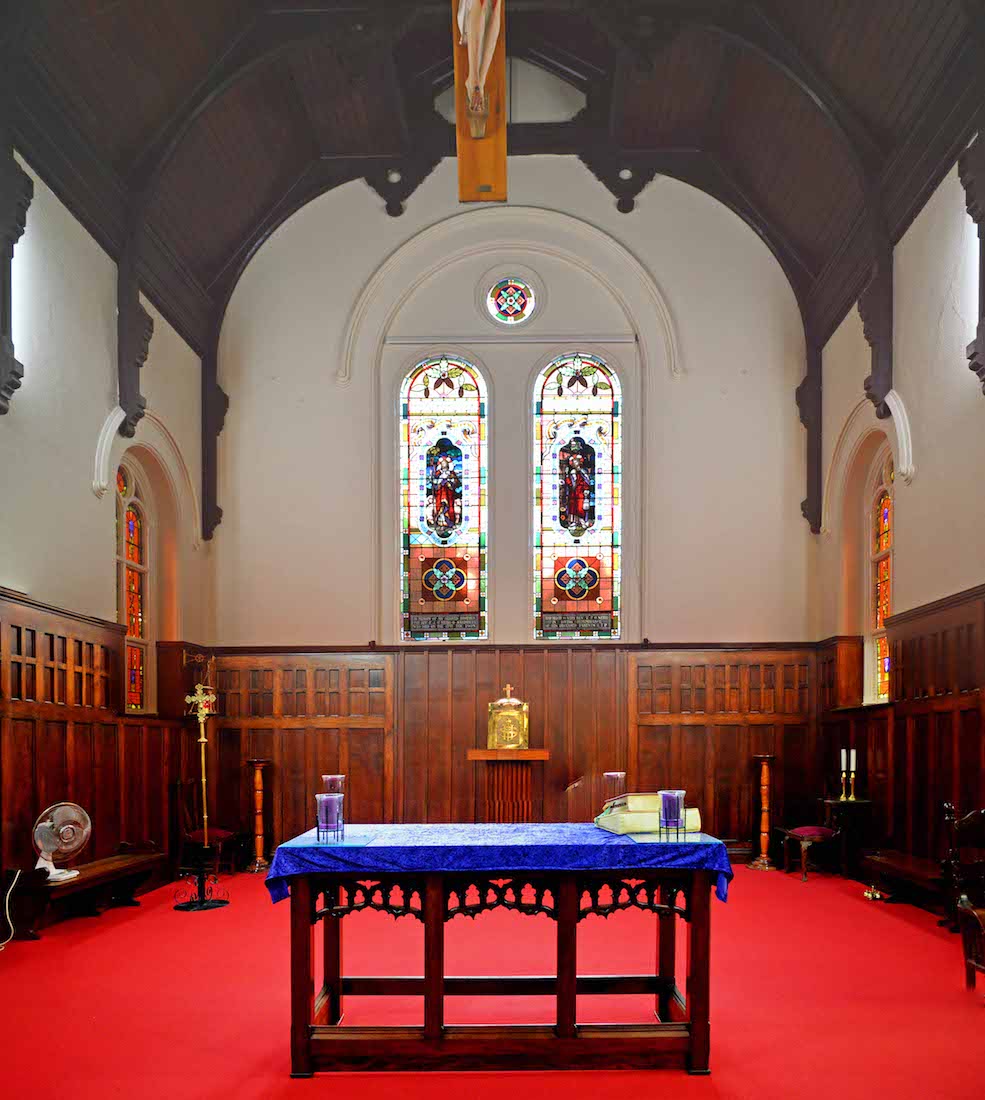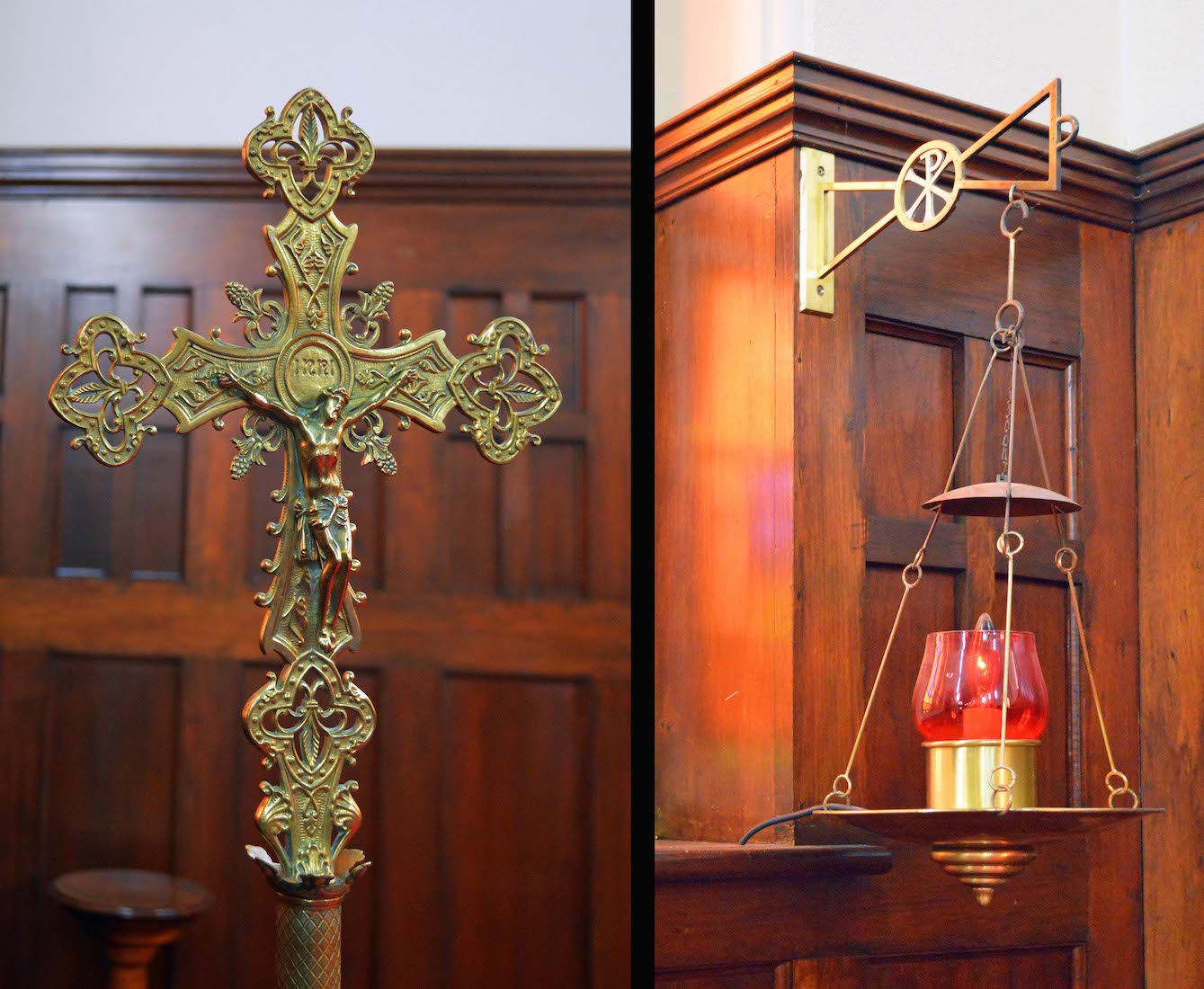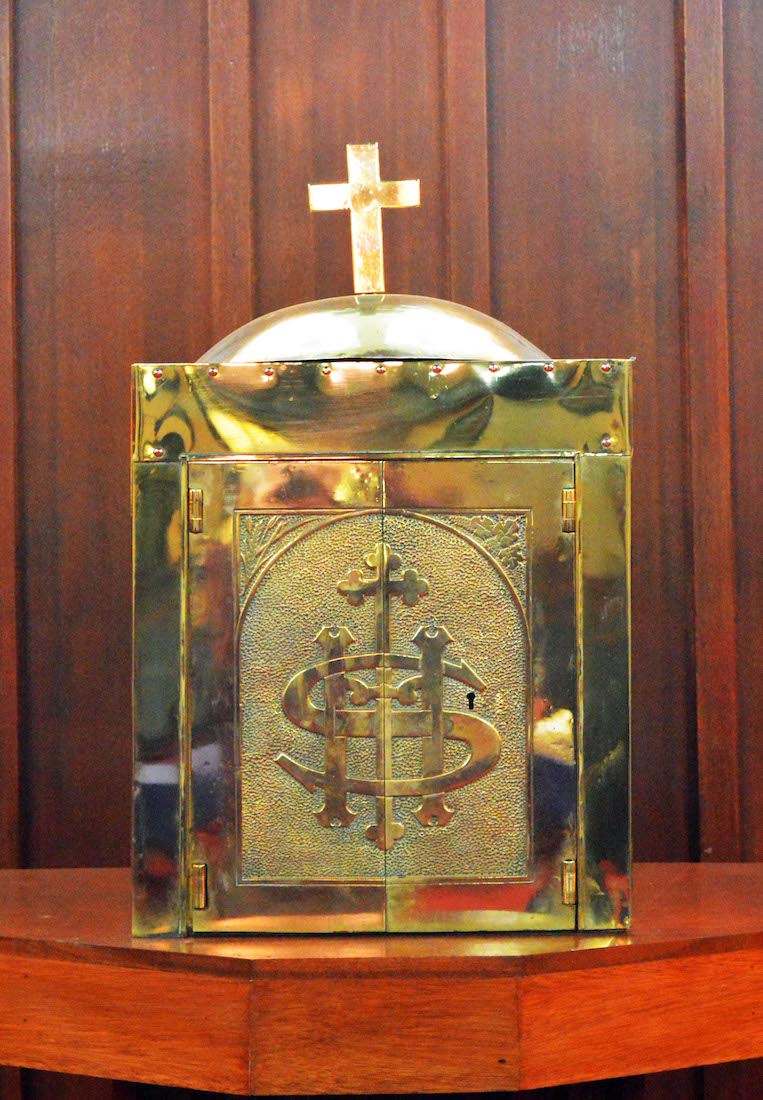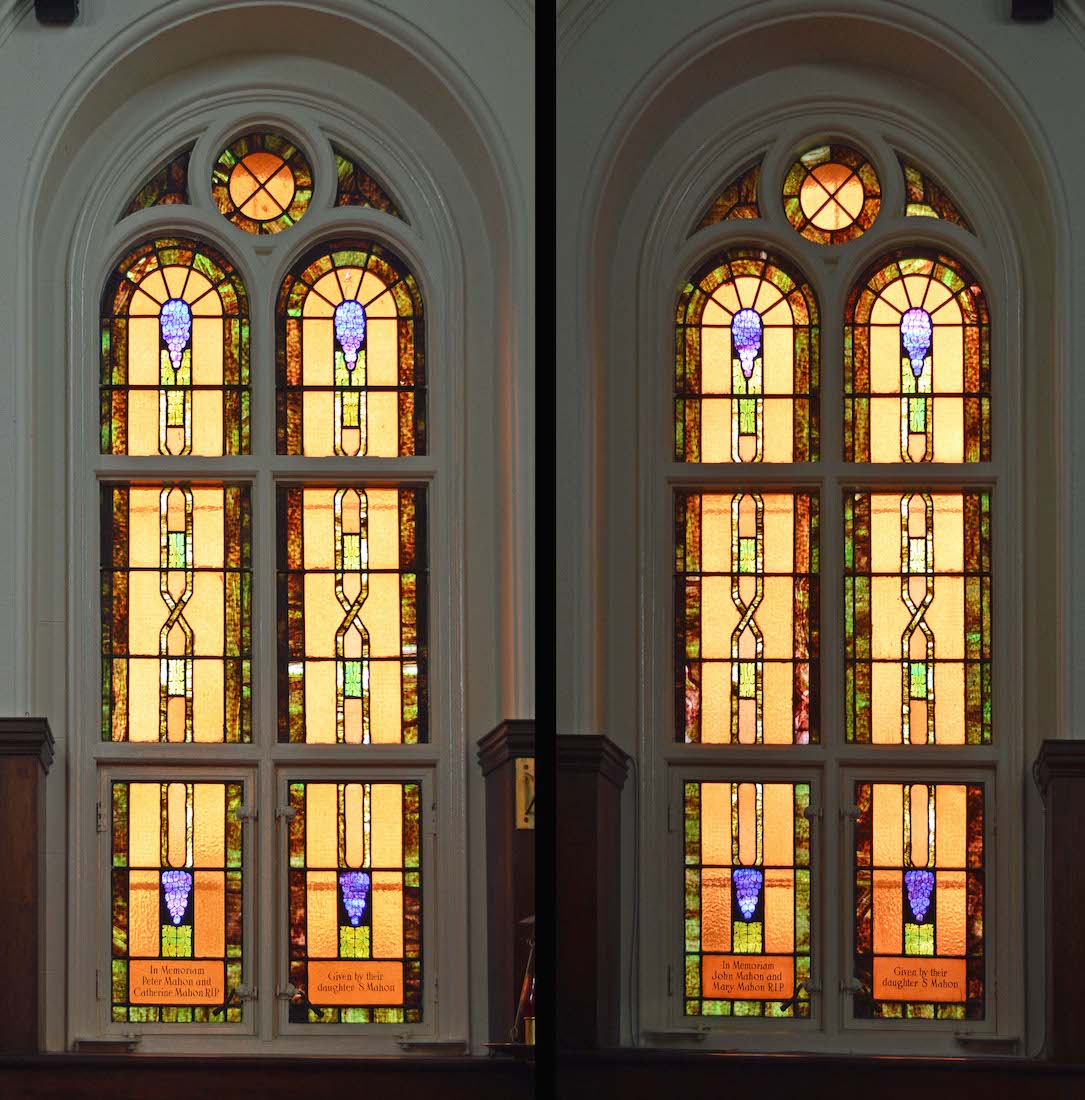
In this corner of the nave are three pictures which are commonly found in Catholic churches. At left is St Mary MacKillop – the first and only Australian granted sainthood. At right are photographs of Pope Francis and Archbishop Philip Wilson. INDEX
22. STATIONS OF THE CROSS VI – I
There are 14 Stations of the Cross which depict the events of that last journey Jesus made to the Cross of Calvary. They are used as an aid to devotion, particularly during Lent and Easter. The pictured Stations VI – I are found on the North wall of the nave.
23. NAVE WINDOWS
The six windows lining the side walls of the nave are identical except for the inscription near the base. We show here a sample window along with the collection of six pairs of inscriptions.
24. NORTH WALL OF THE NAVE
This is an overall view of the North wall of the nave: we notice the windows and the Stations of the Cross.
25. SOUTH WALL OF THE NAVE
The South wall of the nave is very similar in layout to the opposite wall, although there is a small niche and a chapel in the far Southeastern corner.
27. CHAPEL DETAILS
As we face the Chapel we see two decorative windows with a statue of the Virgin Mary between. There is also a stand on which worshippers can place a lighted candle. The plaque tells us that the statue was presented by members of the H.A.C.B. Society in memory of their late revered physician Dr J. P. Maher.
28. THE VIRGIN MARY
The Virgin Mary is almost always shown dressed in blue, as a symbol of purity. Also, as here, there is often a serpent underfoot, in reference to a verse in Genesis (Gen 3:15) interpreted as Jesus overcoming Satan. On the West wall of this chapel is another image ... .
29. OUR LADY OF PERPETUAL SUCCOUR
Our Lady of Perpetual Succour (also known as Our Lady of Perpetual Help) is a Roman Catholic title of the Blessed Virgin Mary as represented in a celebrated 15th-century Byzantine icon. The icon has been in Rome since 1499, and is permanently enshrined in the church of Sant’Alfonso di Liguori, where the official Novena to Our Mother of Perpetual Help text is prayed weekly.
30. MUSIC CORNER
In passing we notice that there is a music corner in the Northeast nave. Beyond the equipment is a baptismal font and other items.
32. FONT, CANDLE, PULPIT
Baptism is the rite of entry into the Catholic church, and the font is where baptism takes place. To the right of the font is a Paschal candle. This is lit in the Easter season and on other special occasions. It alludes to Jesus being the Light of the world. From the pulpit, God’s word is expounded, and teaching is given to the congregation.
33. AMBO AND ST MARY MACKILLOP
The ambo, or lectern, is a reading stand which supports a Bible. From here the scripture is read during services. In the niche at right stands a delightful sculpture of St Mary MacKillop linking hands with two children. This is a miniature of a sculpture which stands by St Francis Xavier Cathedral in Adelaide.
34. ROOD CROSS
A rood or rood cross, sometimes known as a triumphal cross, is a cross or crucifix set above the entrance to the chancel of a medieval church. Many cathedrals have a rood cross; it is less common to find one in a parish church.
35. ST THÉRÈSE’S CHAPEL
We find another little chapel on the South side of the sanctuary. In here is a statue of Saint Thérèse of Lisieux, born Marie Françoise-Thérèse Martin. She was a Roman Catholic French Discalced (Barefooted) Carmelite nun widely venerated in modern times. She lived a very short life, being born in 1873, and dying in 1897 in Lisieux, France. She is popularly known as ‘The Little Flower of Jesus’ or simply ‘The Little Flower’.
36. ALTAR
This Church has a single (nave) altar. Churches used to have a high altar set against the East wall, but a decision of Vatican II in the 1960s resulted in the Eucharist (Mass) being celebrated at an altar like this, much closer to the congregation.
37. CRUCIFIX AND SANCTUARY LAMP
On the North side of the sanctuary stands a delightful ornate Crucifix. Close by is the sanctuary lamp. The lit sanctuary lamp is often believed to indicate the presence of God, but strictly it indicates the presence of sanctified, reserved Elements of the Eucharist – here, in the tabernacle.
38. TABERNACLE
The decorative golden tabernacle features an ornate IHS on the door – a monogram for ‘Jesus’. In here are stored the blessed (reserved) Elements of the Eucharist, used during the week.
39. SANCTUARY SIDE WINDOWS
The sanctuary is partly lit by a matching pair of windows in the North and South walls. The windows feature a vine and grapes design, and are identical apart from the inscriptions. These read: ‘In Memoriam Peter Mahon and Catherine Mahon R.I.P. – Given by their Daughter S. Mahon’; ‘In Memoriam John Mahon and Mary Mahon R.I.P. – Given by their Daughter S. Mahon’. There appears to be a family conundrum here!
40. EAST WINDOWS
The lovely pair of East windows show Christ the Good Shepherd, and a reproduction of Holman Hunt’s ‘Behold I stand at the door and knock’. The inscriptions read: ‘In memory of my beloved brother The Rev F. J. O’Neill, Salisbury, who died on the 17th Dec 1903’; and, ‘Erected by the Very Rev T. F. O’Neill in loving remembrance of his deceased parents. R.I.P.’ This completes our tour of this Church.
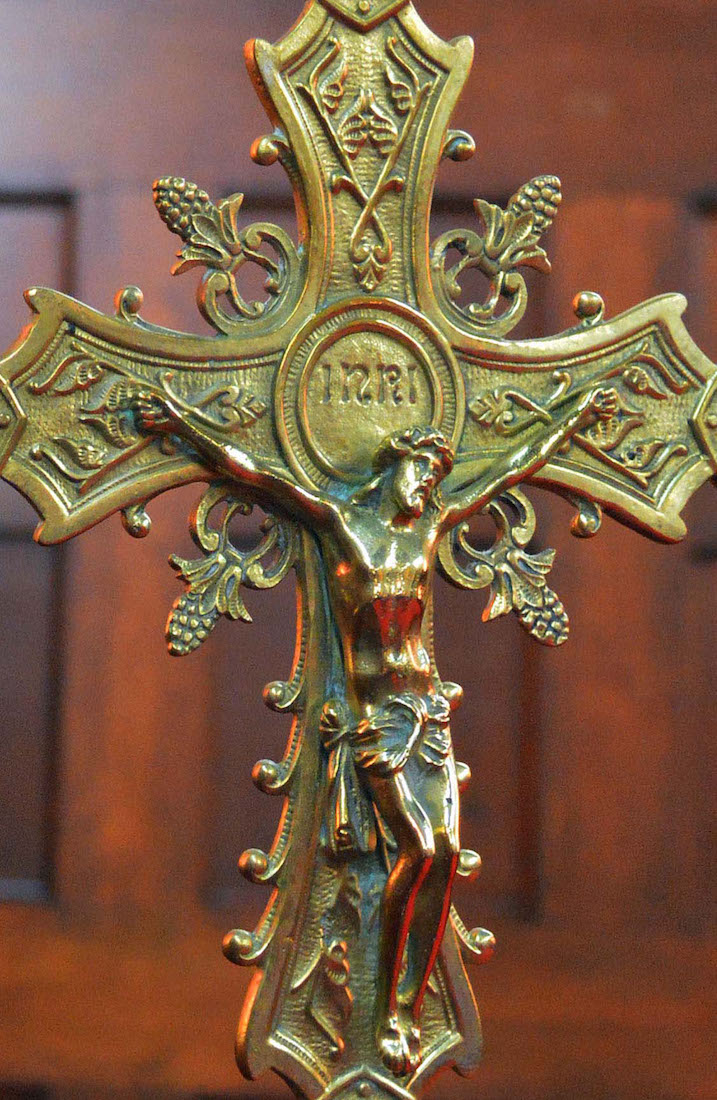
CONCLUSION
I hope you have enjoyed visiting the Church of SS Peter & Paul, Gawler with me. It is a church of somewhat unusual architecture in Australia, and has some interesting features.
I am happy to receive constructive comments or corrections concerning this website. The best websites are the ones which have no errors! I am grateful to my wife Margie who came to Gawler with me, and who has proof-read these pages.
A minimal web link for this Church can be found at
http://www.adelaide.catholic.org.au/parishes-and-mass-times/find-a-church-or-community?church=1742
The photographs which appear on this site can also be found in higher resolution at:
https://www.flickr.com/photos/paulscottinfo/albums/
Site created 04 / 2017 ; reformatted 01 / 2021
Paul Scott


